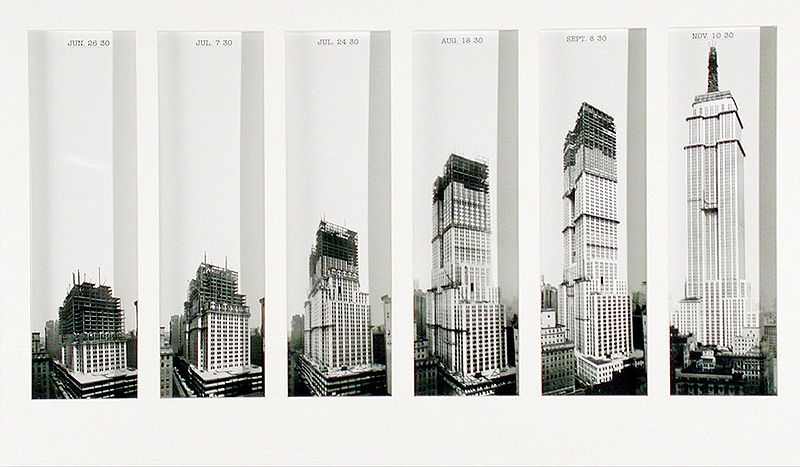The Empire State Building is the world-famous symbol of New York City and is one of the most popular tourist attractions. This renowned building was dedicated on May 1, 1931, in a ceremony led by President Herbert Hoover, who symbolically pressed a button in Washington at the same time the skyscraper’s lights were turned on at 350 Fifth Avenue in Manhattan.
The Empire State Building was the world’s tallest building at the time of its completion, standing at 1,250-foot with 102 stories. It has since been featured in countless films, photographs, and artworks. Here are some little known facts about this famous building:
1.The Empire State Building was constructed during a race to create the world’s tallest building.
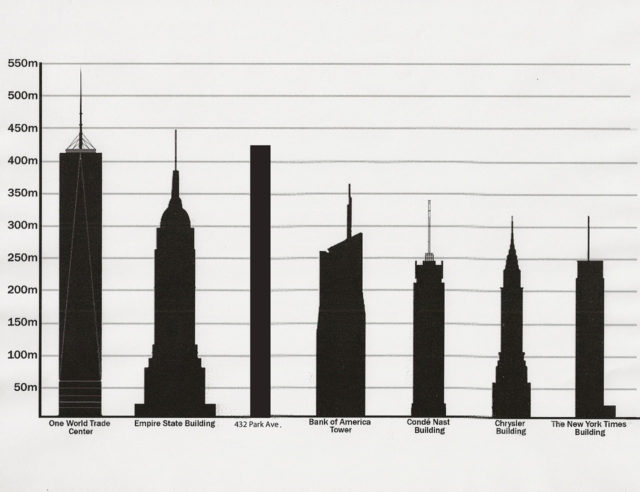
During the 1920s, New York’s economy boomed like never before. There was a mad dash by builders to erect the world’s largest skyscraper. Although there were many competitors, the main rivalry was between 40 Wall Street’s Bank of Manhattan building and the Chrysler Building, an elaborate Art Deco structure conceived by car mogul Walter Chrysler who said it was “a monument to me.” Both towers added more floors to their design in an attempt to best each other, and the race really heated up in August of 1929, when John J. Raskob, the General Motors executive, and Al Smith, former New York Governor, announced plans for the Empire State Building.
After this announcement and with the knowledge that the Empire State Building would be 1,000, Chrysler changed his plans one final time and fixed a stainless steel spire to the top of his skyscraper. The addition meant that the Chrysler Building would stand at a record 1,048 feet. Unfortunately, Raskob and Smith neatly beat Chrysler at his own game and created a taller design for the Empire State Building. As already mentioned, the completed building loomed 1,250 feet over the streets of Manhattan. It would hold the record for the world’s tallest building for nearly 40 years, until the completion of the first World Trade Center in 1970.
2.The Empire State Building was modeled after two earlier buildings.
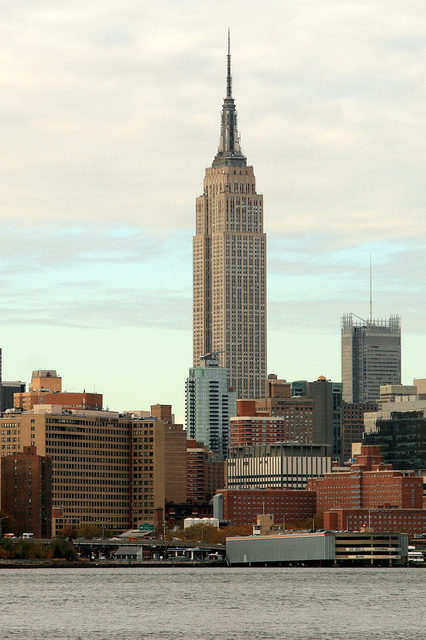
William Lamb, from the firm Shreve, Lamb, and Harmon, originally drew up plans in 1929. He said that he modeled it after the Reynolds Building, which he designed, in Winston-Salem, North Carolina and the Carew Tower in Cincinnati.
These two Art Deco buildings are now cited as the Empire State’s architectural ancestors. During the Reynolds Building’s 50th anniversary in 1979, the general manager of the Empire State Building sent a card that read, “Happy Anniversary, Dad.”
3. Despite its colossal size, the Empire State Building was completed in record time.
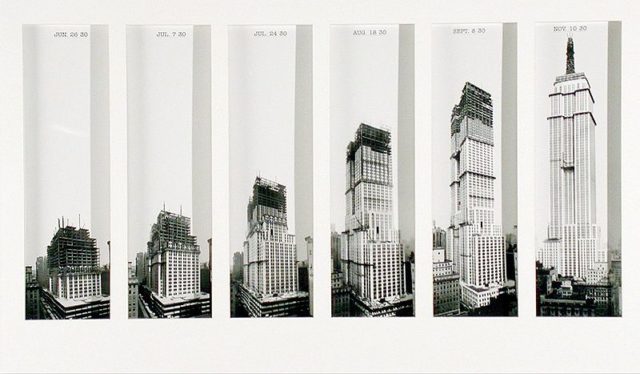
This includes the project, the design, planning, and construction of the building. The grand total time was twenty months from start to finish. The plot that the Empire State Building currently stands on was previously occupied by the Waldorf-Astoria hotel. After the demolition, the contractors Starrett Brothers and Eken used an assembly line process in order to erect the new skyscraper in a brisk 410 days.
They used as many as 3,400 men per day. The skeleton of the building was assembled at a record pace—four and a half stories each week. The first 30 stories were completed before certain details of the ground floor were finalized. Not only was the building finished ahead of schedule, but also under budget. The human cost, however, was the five workers who perished during the construction process.
4. The upper tower of the Empire State Building was originally designed as a mooring mast for airships.
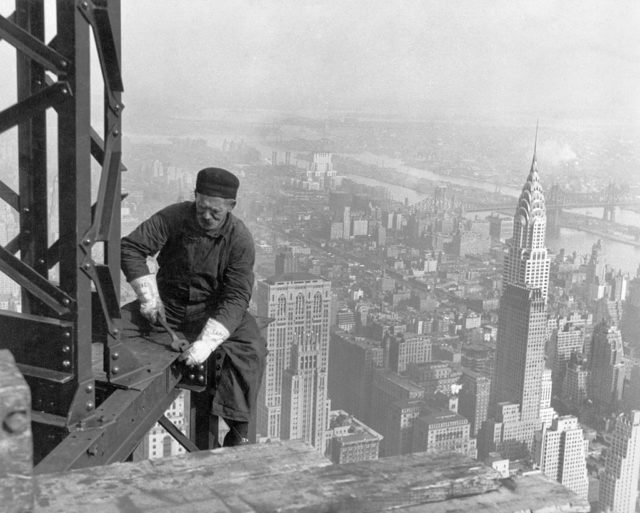
This is by far the most unusual aspect of this skyscraper. The building’s owners were convinced that transatlantic airship travel was the wave of the future and the mast—a 200-foot tower at the top—was designed as a docking port for lighter-than-air dirigibles. This interesting plan required the airships to maneuver alongside the building and tether themselves to a winching apparatus.
Once docked, the passengers would exit via an open-air gangplank, check in at a customs office, and then make their way to the streets of Manhattan in a mere seven minutes. Enthusiasm was high during the early days of this project, but the high winds near the building’s rooftop dashed people’s hopes. Pilots could simply not negotiate the winds to dock safely. Not to say that attempts weren’t made. In September of 1931, a small dirigible tethered itself to the spire for a few minutes.
Two weeks later, a Goodyear blimp dropped a stack of newspapers on the roof as part of a publicity stunt. The plan for the Empire State Building as a dock for lighter-than-air ships was, however, quickly abandoned.
5.The Empire State Building was considered a financial flop.
It had been originally designed to house corporate offices, but the 1929 stock market crash and the onset of the Great Depression meant that it had a rocky start. Upon its opening in 1931, less than 25 percent of the building’s retail space was being used—this earned the building the nickname “Empty State Building.” Desperate for renters, the building’s owners were reduced to engineering publicity stunts in hopes to draw attention.
Such stunts included hosting a séance in 1932 on the 82nd floor to attempt to contact the ghost of Thomas Edison. These stunts weren’t too effective, however. The skyscraper’s upper half remained almost entirely vacant for most of the 1930s. Workers in the building were even told to turn on lights in the upper floors to create the illusion that they were occupied. Finally, when World War II broke out, the Empire State Building became profitable.
6.On the morning of July 28th, 1945, a B-25 bomber crashed into the Empire State Building.
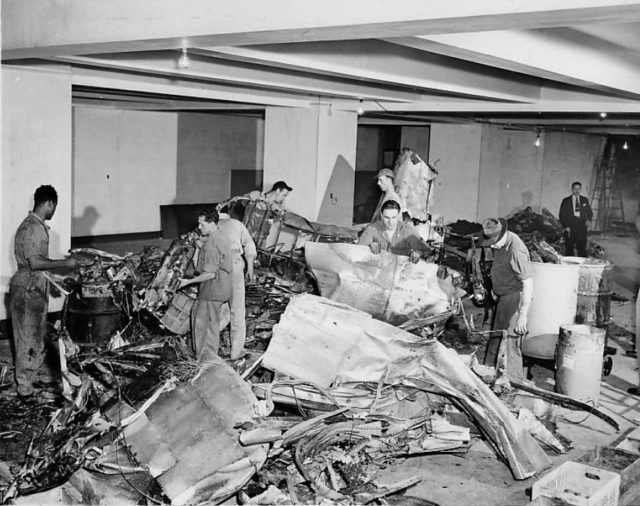
The pilot, Army Lt. Col. William F. Smith, had been flying toward New York’s La Guardia Airport when he became disoriented in heavy fog and drifted over Midtown Manhattan. Lt. Col. Smith, a World War II combat veteran, managed to dodge several skyscrapers, but was unable to avoid plowing into the 78th and 79th floors of the Empire State Building. His speed was 200 miles an hour.
The crash, unsurprisingly, triggered a massive explosion. Debris was sent careening through the building’s interior. Sadly, Smith and two crewmen were killed, along with eleven people inside the building. A four-alarm fire broke out on several floors—the highest building fire in New York’s history—but firefighters managed to extinguish it in a clean forty minutes. The undamaged sections of the building were reopened for business just a mere two days later.
7. During the bomber crash in 1945, a woman survived a fall down 75 stories in one of the Empire State Building’s elevators.
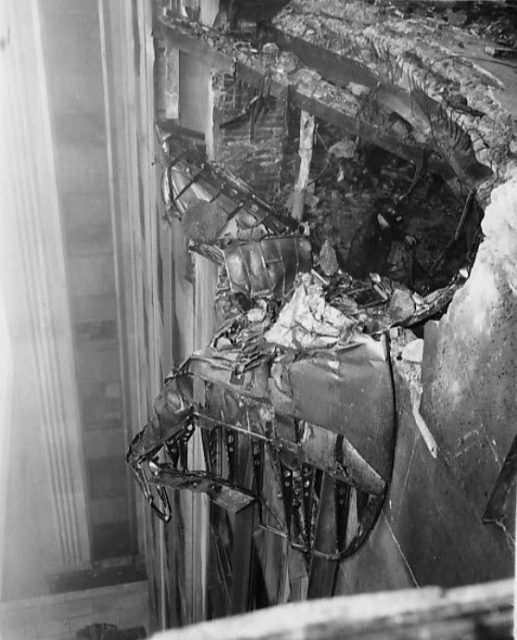
When the plane impacted with the building, several pieces of the B-25’s engine sliced through the building and severed the cables for two elevator cars. In one car was a nineteen-year-old elevator operator named Betty Lou Oliver. The elevator plummeted from the 75th floor and crashed into the subbasement. Luckily for Oliver, more than a thousand feet of severed elevator cable had gathered at the bottom of the shaft—this cushioned the elevator’s fall.
The elevator’s descent might have been slowed by a pocket of compressed air that was generated by the fall. While she did suffer severe injuries—a broken neck and back—Betty Lou Oliver survived.
8.The Empire State Building held the record for world’s tallest building.
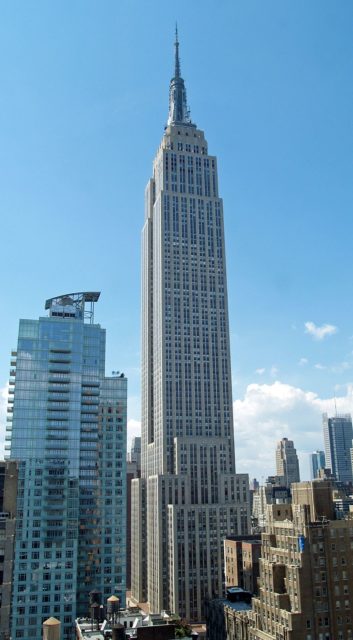
Until, that is, the World Trade Center was constructed in 1970. Not wanting to lose the title, an architect at the firm Shreve, Lamb, and Harmon concocted a scheme that would add eleven floors to the building. The proposed plan required that the 16-story tower to be demolished and replaced by a new top section.
This would have increased its height to 113 stories and 1,495 feet. Had this been completed, the renovation would have made the Empire State Building taller than both the World Trade Center and the Sears Tower that was under construction at the time. The idea was quickly dropped, however, due to concerns about cost and complaints that it would destroy the building’s iconic look.
9. More than a few daredevils have parachuted from the Empire State Building’s observation deck.
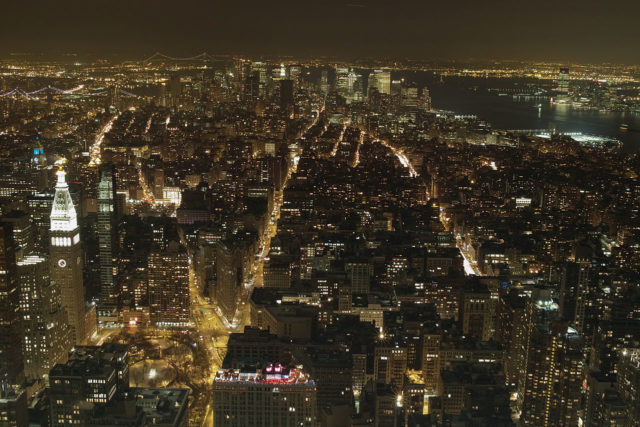
For example, in April of 1986, Alastair Boyd and Michael McCarthy, both British thrill seekers, concealed parachutes under their coats. After buying tickets to gain access to the deck on the 86th floor, they hurled themselves off. They pair landed safely more than 1,000 below on 33rd Street. McCarthy was quickly arrested, but Boyd, after hailing a cab, escaped. He would later turn himself in, and both men were charged with “reckless endangerment” and “unlawful parachuting.”
Twelve years later, Alex “The Human Fly” Kappfjell, a Norwegian parachutist, jumped off the building’s 34th street side. Kappfjell escaped arrest and jumped off the Chrysler Building a few days later. He would finally be arrested after parachuting off the World Trade Center.
10. For the 50th anniversary of the movie King Kong, an inflatable ape was attached to the Empire State Building.
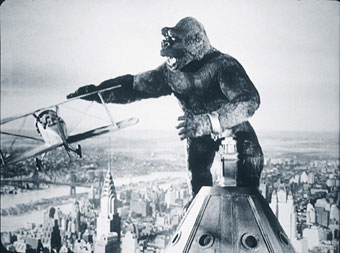
The building has been featured in more than ninety movies, but none is more famous than the 1933 movie, King Kong, which ends with the titular giant ape climbing the skyscraper and being attacked by biplanes. Although the original scene was shot in a studio, a balloon company president tried to recreate it by attaching an inflatable King Kong to the Empire State’s mooring mast on April 1983.
The stunt cost about $150,000, and it didn’t go as planned. The 84-foot King Kong balloon tore while being inflated, thus ruining a plan to have it buzzed by vintage aircraft. A few days later, it was fully inflated, but it only stayed on the building for a short time before another rip forced the project to be scrapped altogether.
